Why it costs India so little to reach the Moon and Mars
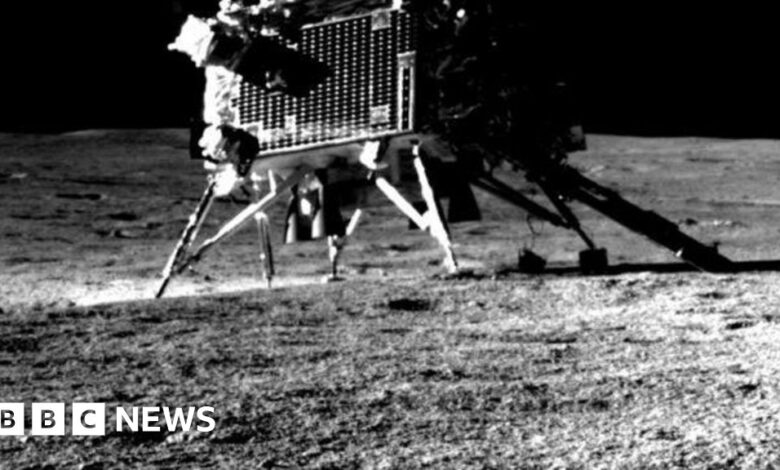
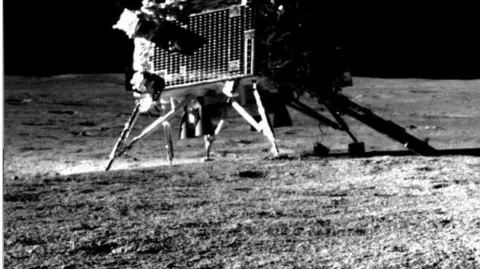 Isro
IsroIndia recently announced a series of ambitious space projects and approved 227 billion rupees ($2.7 billion) for them.
These plans include the next phase of India’s historic mission to the Moon, sending a spacecraft to Venus, building the first stage of the country’s first space station and developing a New heavy rocket can be reused to launch satellites.
This is the largest ever capital allocation for space projects in India, but given the scale and complexity of the projects, they are by no means extravagant and are once again focused on cost-effectiveness of India’s space program.
Experts around the world have been surprised at the cost of the Indian Space Research Organization’s (Isro) Moon, Mars and Solar missions. India spent 74 million USD on Mars probe Mangalyaan and $75 million last year history of Chandrayaan-3 – less than the $100 million spent on the sci-fi thriller Gravity.
Nasa’s Maven Orbiter cost $582 million and Russia’s Luna-25, which crashed onto the Moon’s surface two days before Chandrayaan-3 landed, had a cost 12.6 billion rubles ($133 million).
Despite the low cost, scientists say India is going far beyond the target do valuable work.
Chandrayaan-1 was the first spacecraft to confirm the presence of water in the lunar soil, and Mangalyaan carried a payload to study methane in the Martian atmosphere. Images and data Posted by Chandrayaan-3 is of special interest to space enthusiasts around the world.
So how does India keep costs so low?
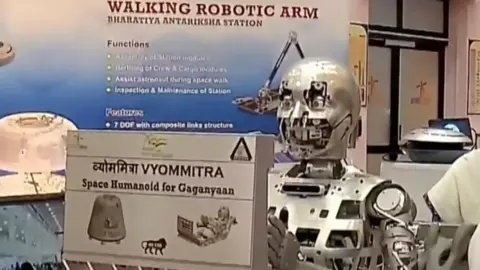 Screenshot from Doordarshan
Screenshot from DoordarshanRetired civil servant Sisir Kumar Das, who managed Isro’s finances for more than two decades, says that the frugal style can be traced back to the 1960s, when scientists first came up with a scheme space for government.
India had just gained independence from British colonial rule in 1947 and the country was struggling to feed its population and build enough schools and hospitals.
“Isro founder and scientist Vikram Sarabhai had to convince the government that the space program was not just an elaborate luxury that had no place in a poor country like India. He explained that satellites can help India serve its citizens better,” Mr. Das told the BBC.
But India’s space program has always had to operate on a tight budget in a country with conflicting needs and requirements. Image from the 1960s and 70s showed scientists carrying rockets and satellites on bicycles or even carts.
Decades later and after several successful interplanetary missions, Isro’s budget remains modest. This year, India’s budget allocation for the space program is 130 billion rupees ($1.55 billion) – Nasa’s budget for the year is $25 billion.
Mr. Das said one of the main reasons why Isro missions are so cheap is because all its technology is indigenously produced and the machinery is made in India.
In 1974, he added, after Delhi conducted its first nuclear test and the West imposed an embargo, banning technology transfers to India, these restrictions “became a blessing.” disguise” for the space program.
“Our scientists see it as motivation to develop their own technology. All the equipment they need is produced domestically – and wages and labor costs here are clearly lower than in the US or Europe.”
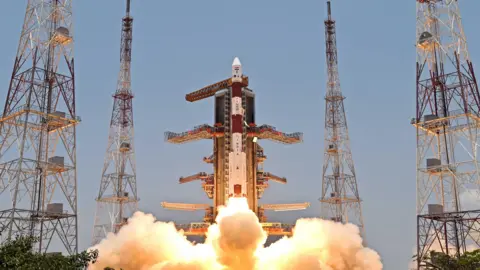 Isro
IsroScience writer Pallava Bagla says that unlike Isro, Nasa outsources satellite production to private companies and also insures its missions, which adds to their costs.
“Also, unlike Nasa, India does not produce engineering models used to test a project before the actual launch. We only made one model and it was meant to fly. It’s a risk, there’s a possibility of an accident, but it’s a risk we have to take. And we can take it on because it is a government program.”
Mylswamy Annadurai, the head of India’s first and second Moon missions as well as its Mars mission, told the BBC that Isro employs fewer people and pays lower salaries, which is hurting Indian projects. become competitive.
He said he “led small dedicated teams of less than 10 people and people often worked long hours without any overtime pay” because they were so passionate about what they did.
Tight budgets for projects sometimes send them back to the drawing board, allowing them to think creatively and leading to new innovations, he said.
“For Chandrayaan-1, the budget allocated was $89 million and that was fine for the initial configuration. But then it was decided that the spacecraft would carry an impact probe to the Moon, which meant an extra 35kg of weight.”
Scientists have two options – use a heavier rocket to carry out the mission, but that would be more expensive, or remove some hardware to lighten the load.
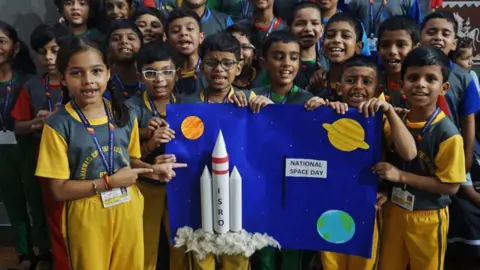 Getty Images
Getty Images“We chose the second option. We reduced the number of thrusters from 16 to 8, and reduced the pressure tank and battery from 2 to 1.”
Mr Annadurai said the reduction in the number of batteries means the launch must take place before the end of 2008.
“That would give the spacecraft two years as it orbits the Moon without encountering a prolonged eclipse, which would affect its ability to recharge. Therefore, we have to maintain a strict work schedule to meet the launch deadline.”
Mangalyaan cost very little, Mr. Annadurai said, “because we used most of the hardware we had designed for Chandrayaan-2 after the second Moon mission was delayed.”
Mr Bagla said India’s space program at such a low cost was “an amazing feat”. But as India expands, costs could rise.
Currently, India uses small rocket launchers because it doesn’t have anything more powerful, he said. But that means India’s spacecraft takes longer to reach its destination.
So when Chandrayaan-3 was launched, it orbited the Earth several times before being shot into lunar orbit, where it orbited the Moon several times before landing. On the other hand, Russia’s Luna-25 quickly escaped Earth’s gravity thanks to its powerful Soyuz rocket.
“We used Mother Earth’s gravity to propel us to the Moon. It took us many weeks and a lot of resourceful planning. Isro has mastered this and done it successfully many times.”
However, Mr. Bagla said, India has announced plans to send a manned mission to the Moon by 2040. and it will need a more powerful rocket to get astronauts there faster.
Recent govt speak Work on this new rocket has been approved and it will be ready by 2032. This next generation launch vehicle (NGLV) will be able to carry more weight but will also be more expensive.
Additionally, Mr. Bagla said, India is in the process of opening up its space sector to private investors and it is unlikely that costs will remain so low once that happens.
Follow BBC News India on Instagram, YouTube, Twitter And Facebook.





